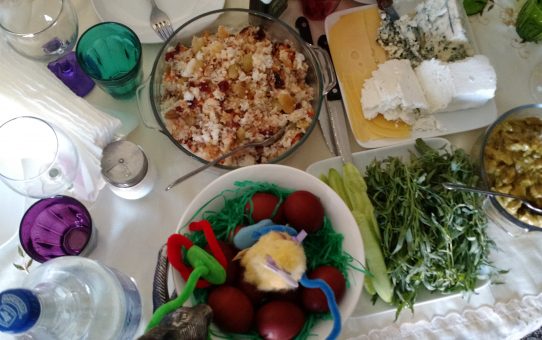Category: Armenian
Characterize Armenian cuisine:
The flavor of the food relies on the quality and freshness of the ingredients rather than on excessive use of spices.
Fresh herbs are used extensively, both in the food and as accompaniments. Dried herbs are used in the winter, when fresh herbs are not available.
Wheat is the primary grain and is found in a variety of forms, such as: whole wheat, shelled wheat, bulgur (parboiled cracked wheat), semolina, farina, and flour. Historically, rice was used mostly in the cities (especially in areas with a large Turkish population) and in certain rice-growing areas (e.g., Marash and the region around Yerevan).
Legumes are used liberally, especially chick peas, lentils, white beans, and kidney beans.
Nuts are used both for texture and to add nutrition to Lenten dishes. Of primary usage are walnuts, almonds, pine nuts, but also hazelnuts, pistachios (in Cilicia), and nuts from regional trees.
Fresh and dried fruit are used both as main ingredients and as sour agents. As main ingredients, the following fruit are used: apricots (fresh and dried), quince, melons, and others. As sour agents, the following fruits are used: sumac berries (in dried, powdered form), sour grapes, plums (either sour or dried), pomegranate, apricots, cherries (especially sour cherries), and lemons.
In addition to grape leaves, cabbage leaves, chard, beet leaves, radish leaves, strawberry leaves, and others are also stuffed.

